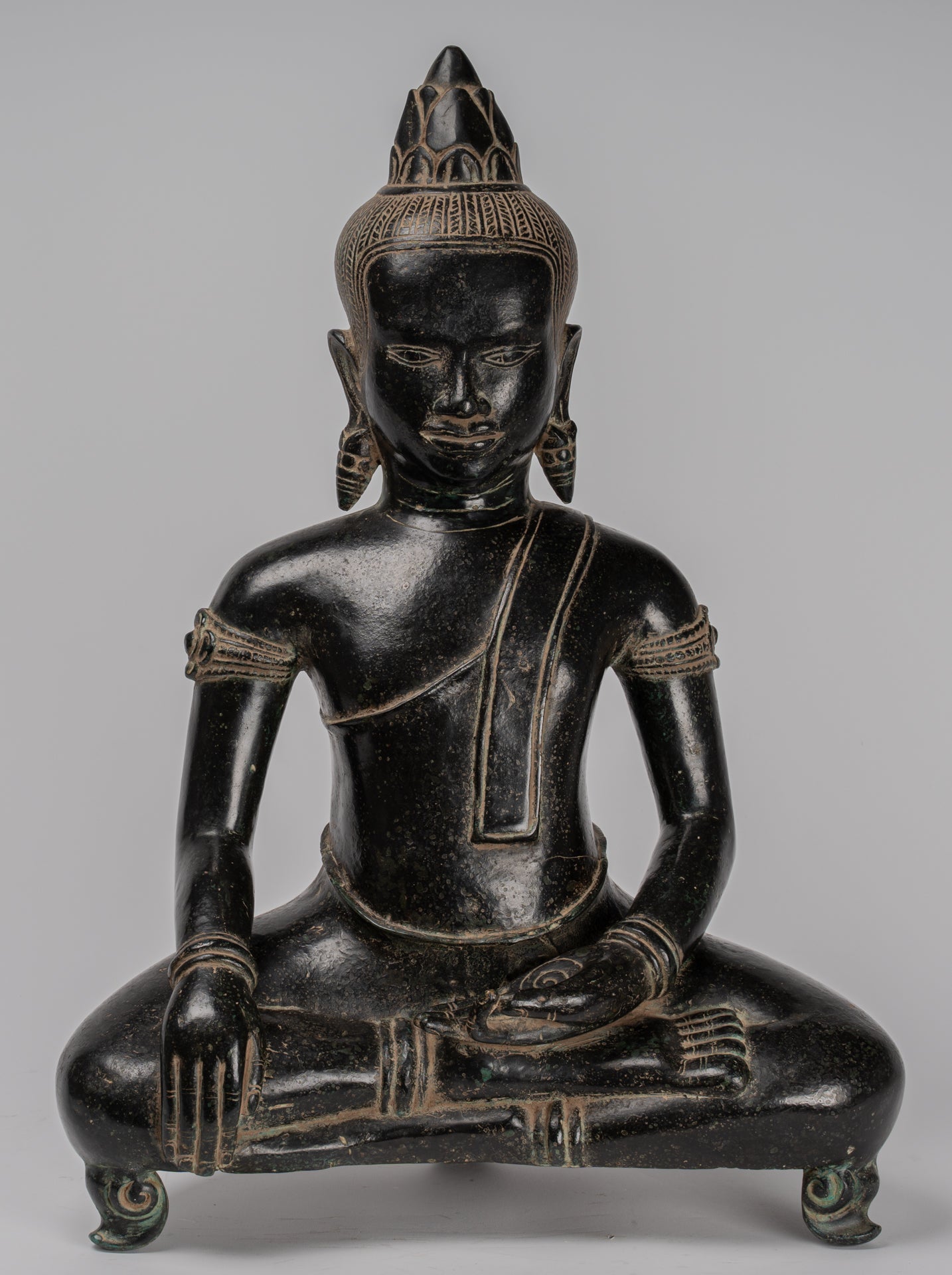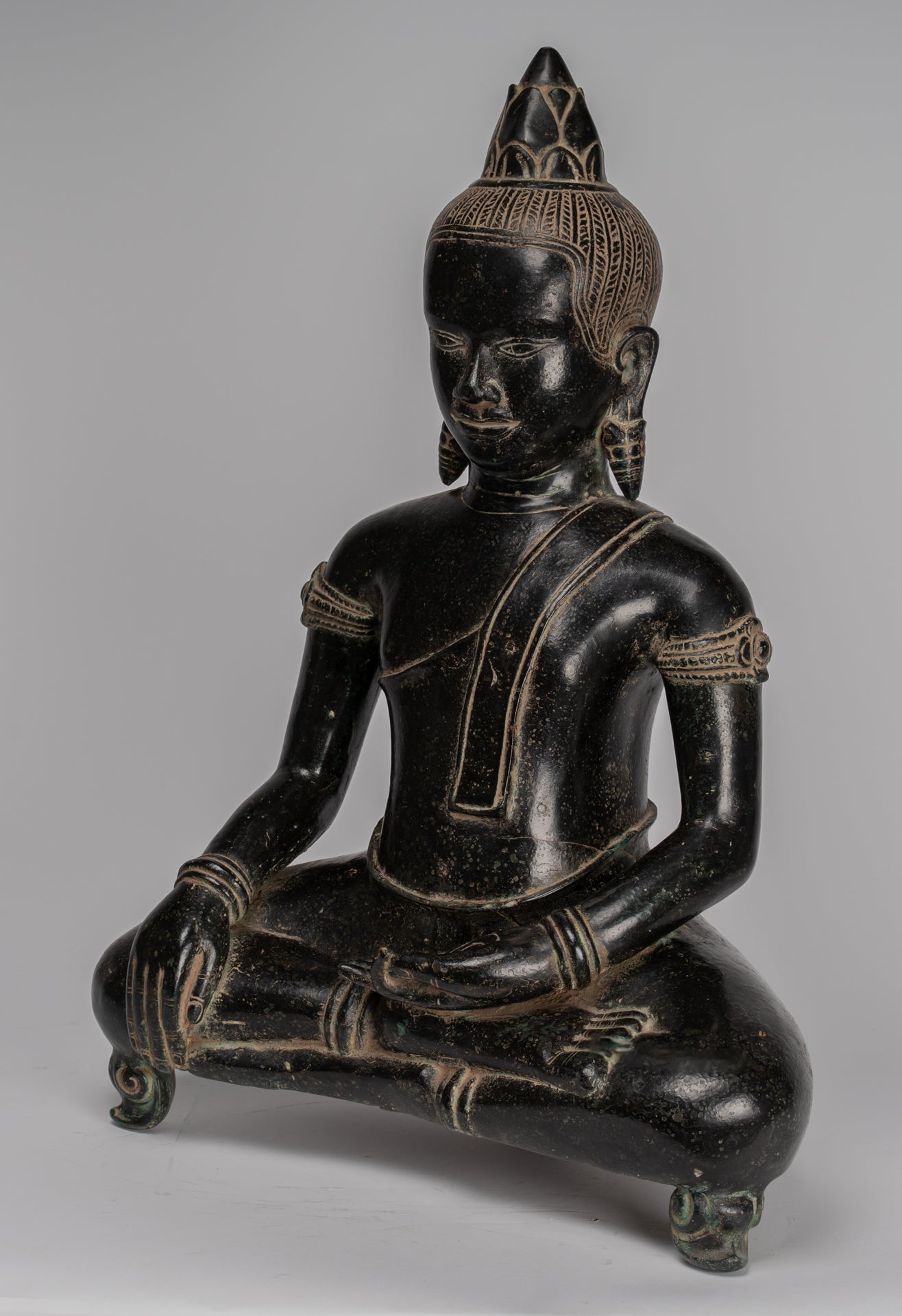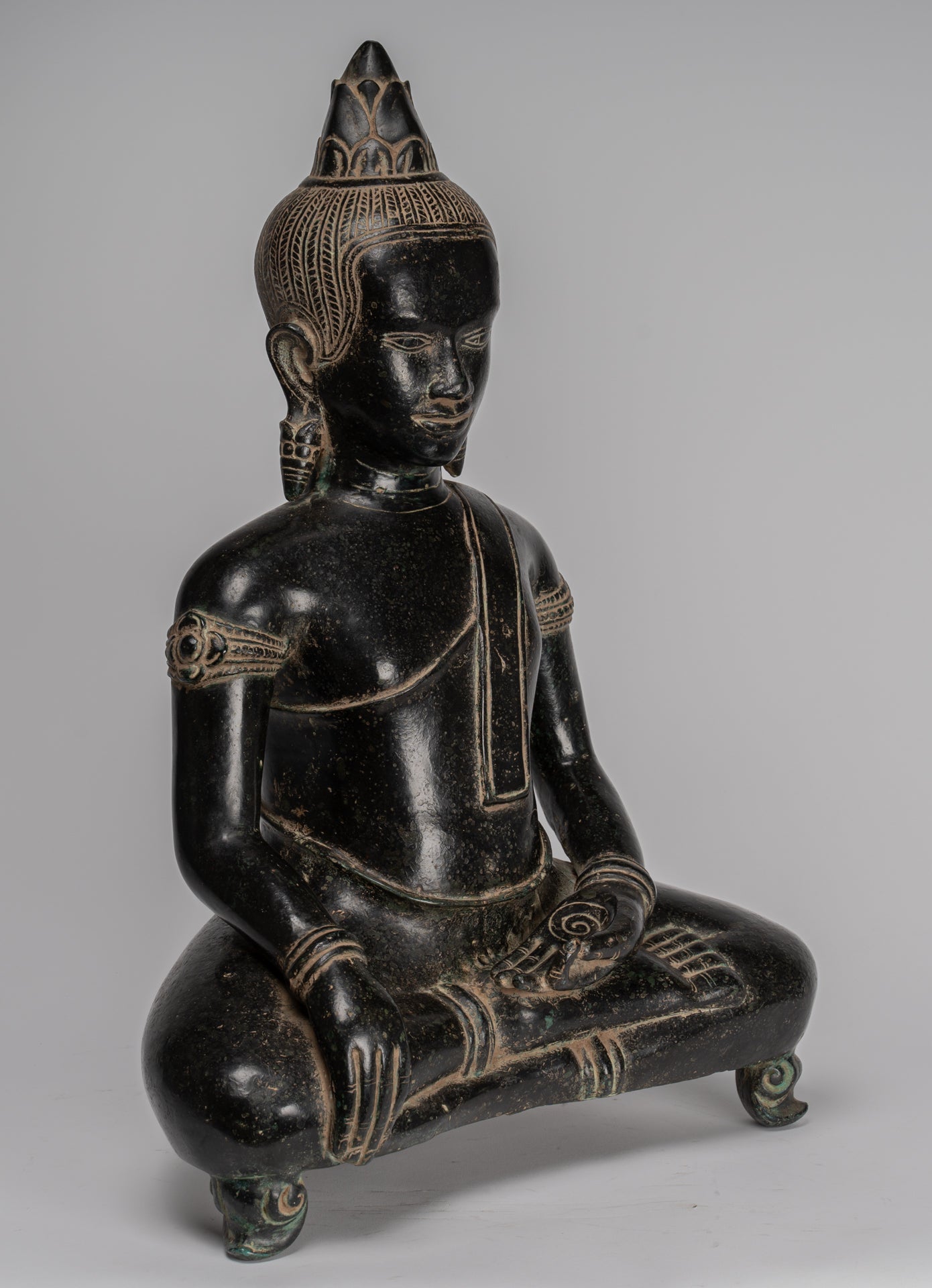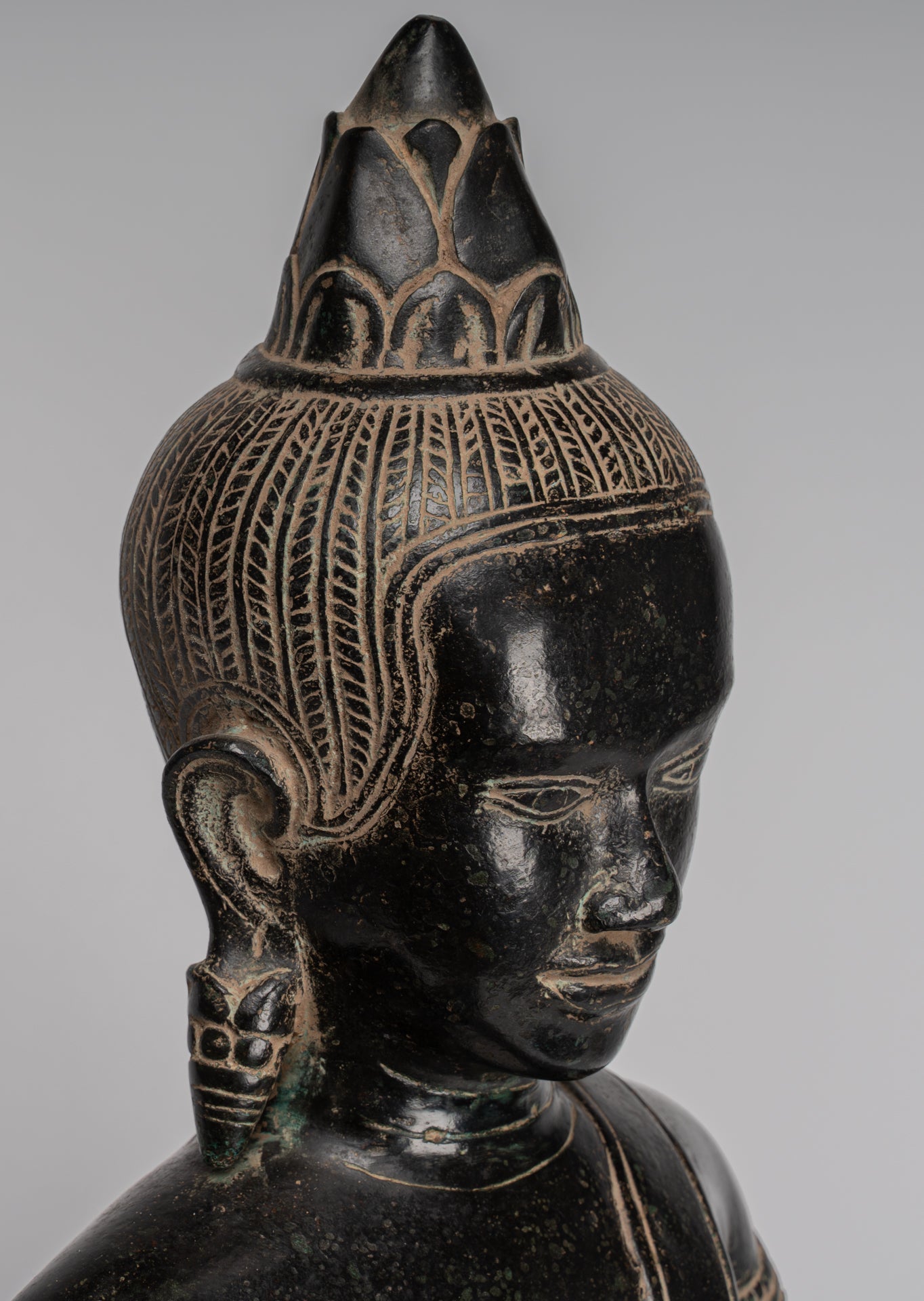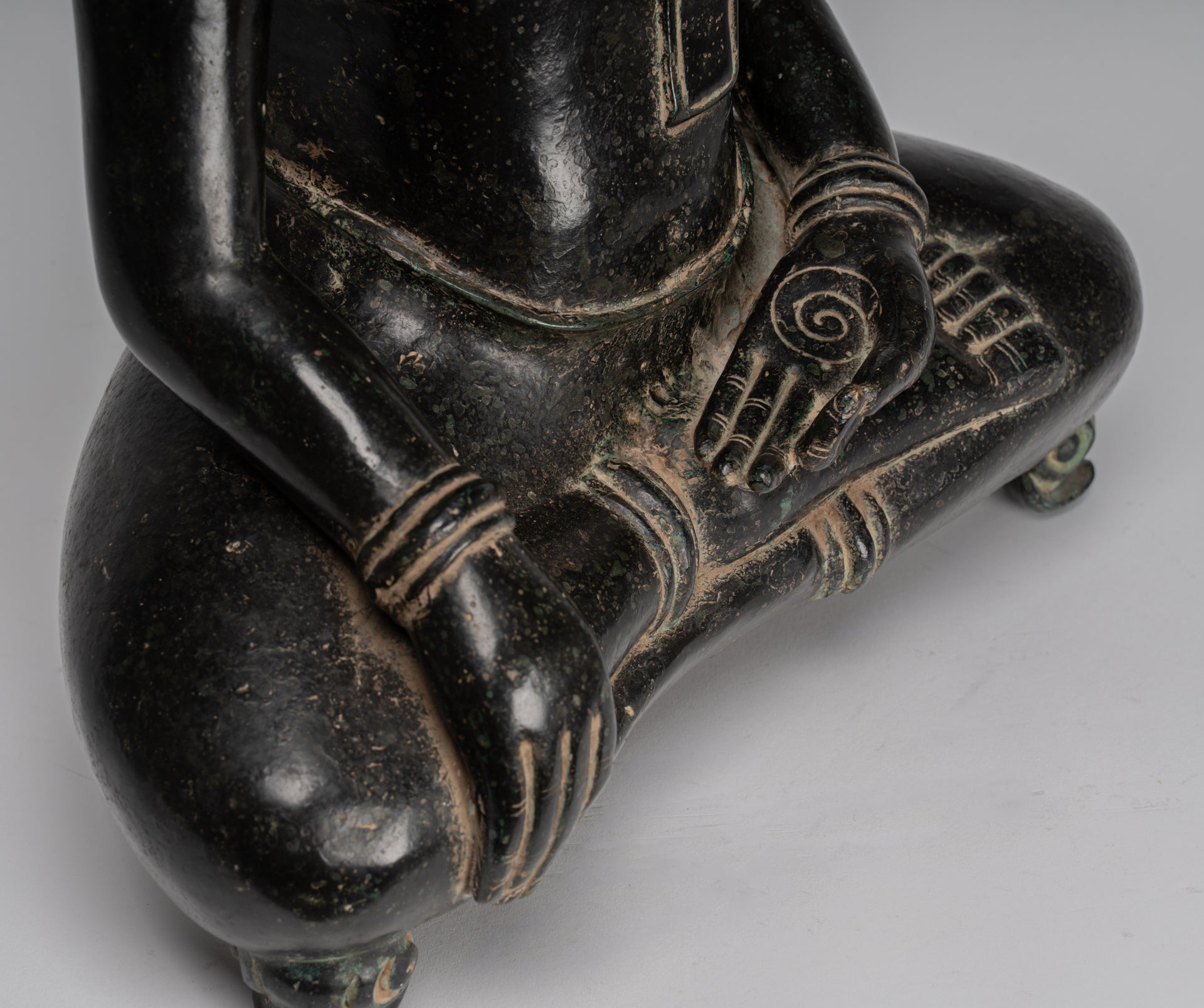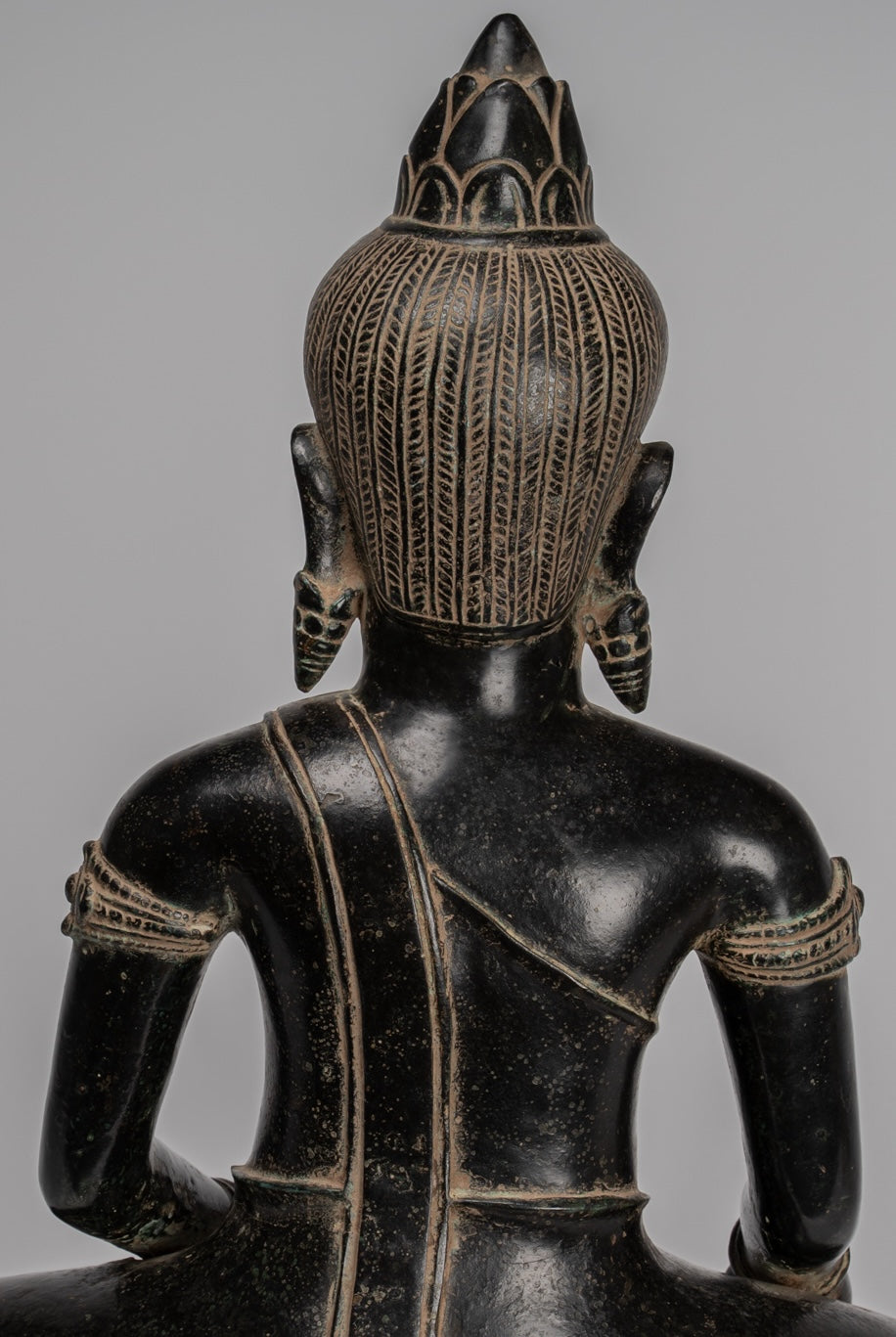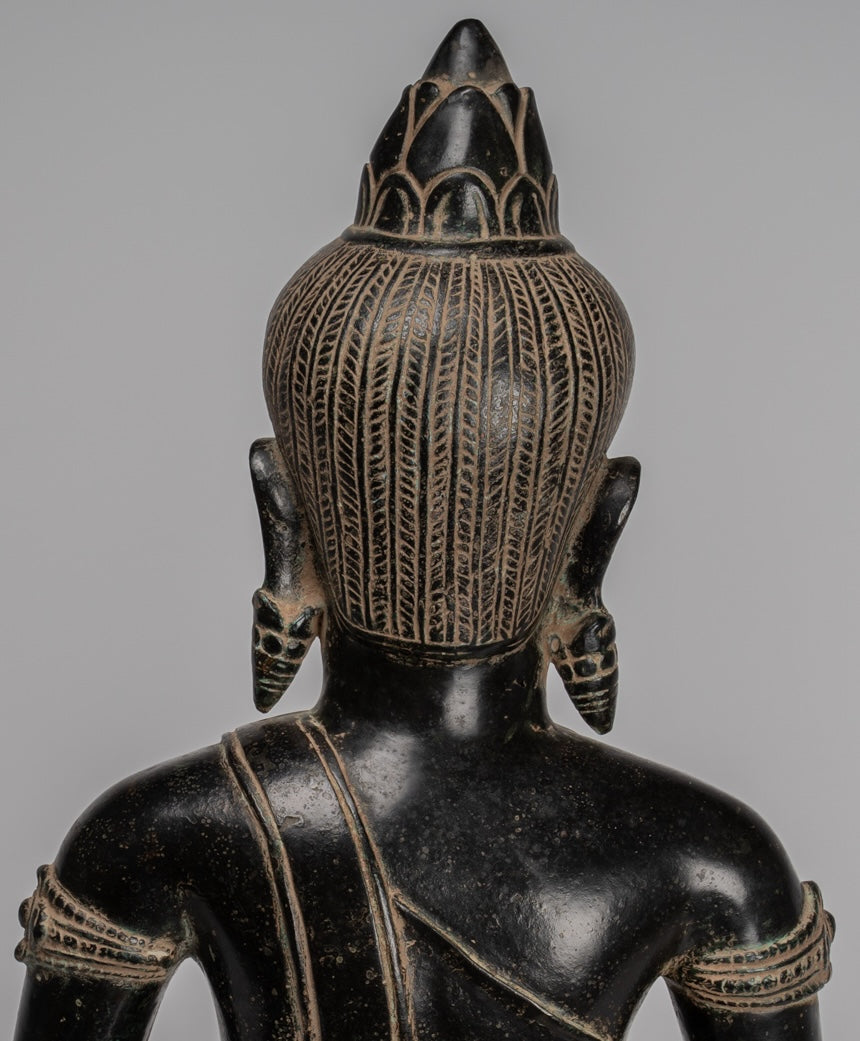-
Antique Khmer Style Bronze Enlightenment Angkor Wat Buddha Statue - 57cm/23"
Measures (Height) 57cm/23"
A post Angkor Wat Bayon 13th century style seated enlightenment Buddha.
His hands are in the Bhumisparsa mudra, the gesture of Enlightenment. The Enlightenment Buddha, also known as the Buddha in the moment of enlightenment or the Earth-touching Buddha, is a profound and revered image in Buddhism. This depiction captures a pivotal moment in the life of Siddhartha Gautama, the historical Buddha, as he achieved enlightenment under the Bodhi tree. The Enlightenment Buddha serves as a powerful symbol of the Buddha's awakening and the universal potential for spiritual realization.
The Buddha's face is serene, with a naturalistic and warm expression; his head is topped by a detailed lotus flower ushnisha, in the Angkor Wat style, symbolizing his high level of spiritual development The bodies profile is with broad shoulders and slender waist, covered by a Sanghati robe worn diagonally over the left shoulder. The right shoulder is left bare.
The Buddha features an oval face, with almond shaped downcast eyes. Curved eyebrows meet above a prominent nose, and contoured lips with an exalted expression, appear smiling. His earlobes are stretched long from a youth spent as a prince wearing heavy gold earrings.
The Buddha is seated in the Bhumisparsa or 'Calling the Earth to Witness' mudra. With fingers slightly touching the ground this position represents the subduing of Mara (a demon) who bombarded Buddha with demons, monsters, violent storms and the three seductive daughters. Remaining steadfast the Buddha testified to his meritorious past by pointing to the earth and calling the Earth Goddess, Thorani.
Rising from the ground the Earth Goddess wrings the water from her long black hair. By this action she raises a torrential flood that drowns Mara and his army of demons. This gesture reflects this story symbolizing enlightenment, as well as steadfastness and Buddha's achievement of perfection or nirvana.
The Enlightenment Buddha, with his symbolic gesture of touching the Earth, encapsulates the essence of Buddhism's transformative message. It serves as a timeless reminder of the path to awakening, inner transformation, and liberation from suffering.
The image inspires individuals to cultivate mindfulness, wisdom, and perseverance on their spiritual journey. The Enlightenment Buddha is a beacon of hope, offering the profound message that the path to enlightenment is accessible to all who seek it, transcending the illusions and distractions of the world and touching the profound truth of existence.
This traditional in appearance piece is sure to add serenity to your home, office or sacred space.
SATISFACTION GUARANTEE - We have been offering SE Asian Art for many years and are proud of the reputation we have developed for fair and honest listings. However, if for any reason, whatsoever, you are unhappy with your purchase please just let us know and we will provide a full refund. We want you to be 100% happy with your purchase. We have many other Buddhist statues available.
-
The majority of orders will be shipped with DHL. This is a secure, express and fully tracked service.
Items less than 2Kg we typically ship using Royal Mail.
Once we receive your order we try to ship all orders the same or next working day.
Large and/or fragile pieces requiring palletising, specialist crating and/or extra packaging may take a little longer. Palletised shipments will be delivered curbside.
All orders over 35 GBP will be shipped free of charge.

-
We genuinely hope that all purchases delight.
However, if they do not, regardless of reason, we will refund all orders upon receipt of the unwanted item. Just notify us within 14 days of receiving your order that you wish to make a return and send the piece back to us with 30 days of delivery.
The Ganesha statue, representing the beloved Hindu deity of wisdom, prosperity, and new beginnings, has long been a symbol of auspicious energy in homes, gardens, and sacred spaces.
Whether you’re an art collector, a spiritual practitioner, or simply captivated by Ganesha’s timeless beauty, selecting the right piece—especially in wood, stone, or bronze—requires both knowledge and intuition.


